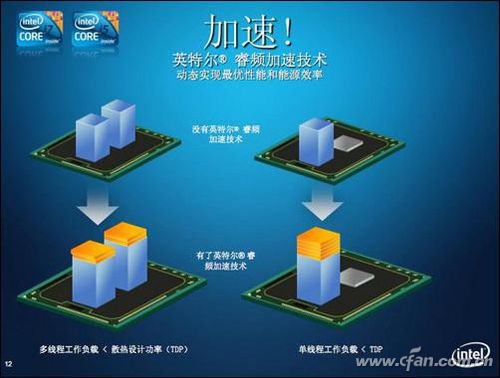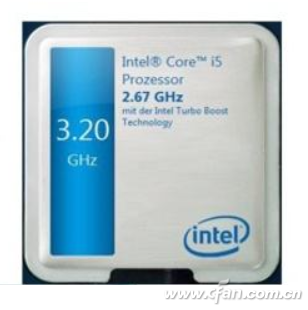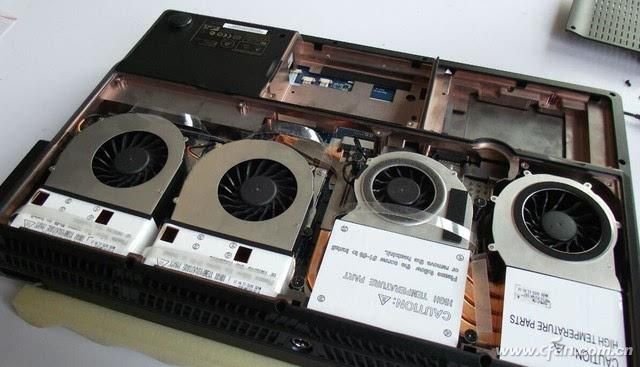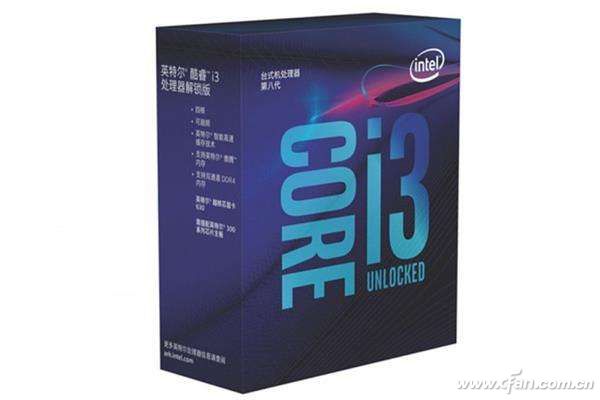In the morning's "News Tea Fan" mentioned in the "Intel i3 finally ushered in Turbo Boost", the little partner in the message asked Rui what the role. Xiao Bian today shared with you about the issue of Turbo.

What is Turbo?
Core frequency is actually accelerating frequency, focusing on improving the efficiency of single-core execution and increasing frequency is the most intuitive way. When a processor handles a complex application, a CPU with an accelerated frequency technology will automatically increase the main frequency to meet the computational needs of the load application; and when the work needs to switch to tasks that are mainly non-CPU high-performance computing requirements such as data exchange, such as Said read and write operations and the like, the acceleration frequency will be reduced, the processor will be in an energy-saving low-power state. In this way, the CPU not only guarantees the high performance required for operation, but also balances the heat dissipation caused by power consumption.
In general, Turbo frequency-based acceleration frequency technology allows the CPU to increase the frequency by about 20% on the basis of the basic frequency, so that the CPU can "exceed" to meet the computational needs.

Is Turbo Frequency overclocked?
Certainly there will be a small partner, said Rui is not just the same as overclocking? It is undeniable that there is a clear similarity between the two, both of which are frequent promotions. But there are also obvious differences between them:
Turbo Frequency can dynamically adjust the CPU frequency and voltage to improve performance based on actual application requirements, while keeping the processor running within the power, current, voltage and temperature limits defined by the processor's technical specifications. Overclocking is Artificially forced to increase the frequency, including a series of actions such as raising the voltage, and not to mention that this has exceeded the design specifications of the CPU, power consumption increased substantially, the most fundamental is that it can not be dynamically adjusted according to the degree of responsibility of the application requirements as Rui frequency, This is the essential difference between the two.

Is the power wall still there?
This mobile version i3 to increase the Turbo frequency message, but also gives rise to a question, the power wall still exists? The so-called power-consumption wall is the maximum power consumption range that can be achieved by the CPU under the support of the existing process technology. When the CPU is out of range, the CPU is easily down-converted to protect itself.
To say that the mobile version of the CPU power requirements are still more demanding, with Intel's U-series mobile version of the CPU for the past two years, the maximum TDP is 15W look like, the upper limit is determined, but also continue to improve performance, Rui should be said to be the best way to achieve.
Thanks to the help of the 10nm process technology (messages show that the i3 with Turbo frequency will use 10nm technology), will have the core frequency band to the i3, if it is still 14nm process, the basic frequency has reached 2.2GHz/2.7GHz In the case of Turbo, we also need to maintain 15W TDP, which is so magical that it is difficult to achieve.

When is the desktop?
The i3 with Turbo frequency technology is also a mobile version of low-voltage CPU. Many small partners also care about whether the new i3 of the desktop computer is also supported. From the observation of Xiaobian, I am afraid it is still difficult to achieve, on the one hand is the desktop power consumption is less limited, TDP reached 65W, with the cash i3 8100 example, the basic frequency has reached a staggering 3.6GHz, if you add Rui With the frequency technology, the performance brought by the single-core frequency increase will be very impressive - how does this position the i5? So it's not too realistic for desktop i3 to join Turbo.

Finally, in the morning there was a little friend mentioned that I do not know what i3, i5, i7 mean, here Xiaobian also briefly said, very easy to understand:
Entry-level CPU: Intel Celeron, Pentium, AMD Ryzen APU
Mainstream CPU: Intel Core i3, AMD Ryzen 3
Mid-range CPU: Intel Core i5, AMD Ryzen 5
High-end CPU: Intel Core i7, AMD Ryzen 7
Flagship CPU: Intel Core i9, AMD Ryzen Pro, Ryzen Threadripper

The RIMA deep cycle batteries including UND series of AGM deep cycle batteries, UNG series of GEL Batteries, deep cycle batteries and Tubular Batteries, provide enhanced performance and excellent reliability in long duration cycling applications. The high density active materials plates and specialized paste formulation of the deep cycle battery provide a longer service cycle life without shortening the life of the battery.
General Future:
5-20 years design life(25℃)
Non-spillable construction
Sealed and maintenance-free
Excellent recovery from deep discharge
High density active materials plates
Longer Life and low self-discharge design
Standards:
Compliance with IEC, BS, JIS and EU standards.
UL, CE Certified
ISO45001,ISO 9001 and ISO 14001 certified production facilities
Application:
Solar and wind power system
Communication systems
Uninterruptible power supplies
Golf cars and buggies
Alarm and security system
Electric toy and wheelchairs, etc.
Deep Cycle Agm Battery,Agm Battery Deep Cycle,Solar Battery Deep Cycle,Deep Cycle Solar Battery
OREMA POWER CO., LTD. , https://www.oremabattery.com